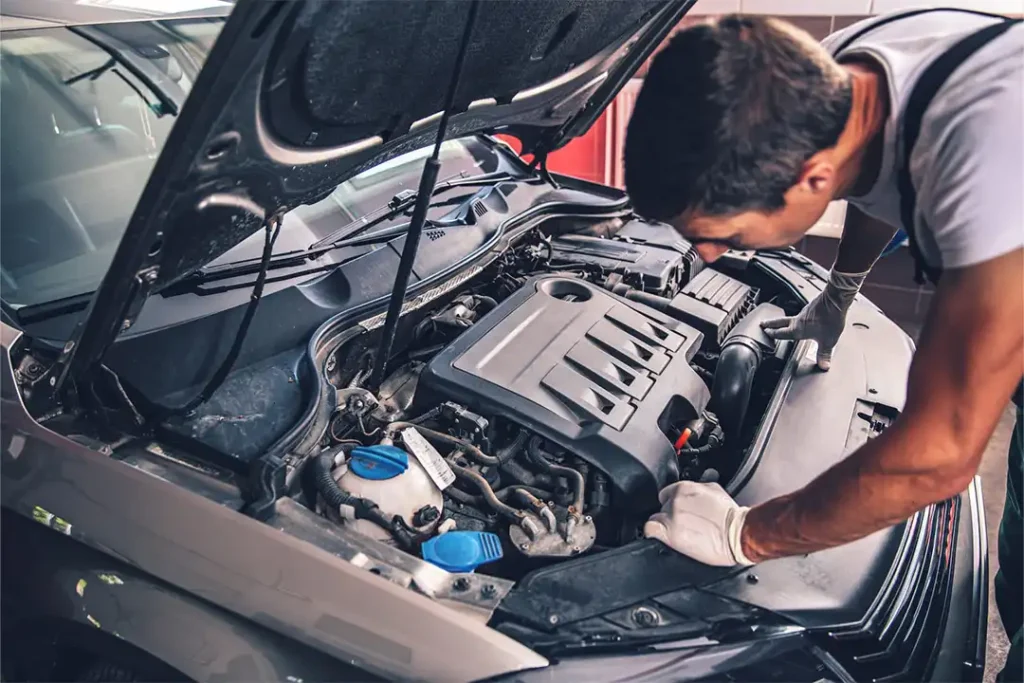In recent years, ceramic paint protection has gained significant popularity among car owners and enthusiasts looking for advanced solutions to preserve their vehicle’s paintwork. Unlike traditional wax or sealants, ceramic paint protection offers a more durable and long-lasting shield against environmental contaminants and wear. This blog delves into the science behind ceramic paint protection, explaining how it works and why it’s become a must-have for vehicle owners who want to keep their cars looking new for longer.
What Is Ceramic Paint Protection?
Ceramic paint protection is a liquid polymer applied to the exterior of a vehicle to create a durable protective layer on the paintwork. Unlike conventional waxes or sealants, which provide temporary protection, ceramic paint protection uses advanced nanotechnology to bond with the surface at a molecular level. This forms a hydrophobic layer that repels water, dirt, and contaminants, keeping the vehicle’s paint pristine. The main difference is the longevity of the protection, as ceramic paint protection can last for years, whereas traditional options only provide short-term results.
The Science of Ceramic Coating
Chemical Composition
The magic behind ceramic paint protection lies in its chemical composition, particularly the use of silica dioxide (SiO2) and titanium dioxide (TiO2). These compounds form a nano-coating that bonds directly to the paint’s surface, creating a strong, durable layer of protection. The molecular structure of these materials is what makes ceramic paint protection so effective. The coating forms an invisible barrier that’s highly resistant to water, oils, dirt, and even UV rays, which are known to cause fading and oxidation over time.
Application Process
To achieve the best results, ceramic paint protection must be applied to a clean, polished, and decontaminated vehicle surface. Any dirt or imperfections on the paint can interfere with the bonding process, making it less effective. Once applied, the coating needs to cure for a specific period to reach its full potential. This curing process is vital, as it allows the nano-particles to bond fully to the paint, providing the highest level of protection.
How Ceramic Paint Protection Works
Hydrophobic Properties
One of the standout features of ceramic paint protection is its hydrophobic properties. This means that water simply beads off the surface instead of soaking into the paint. Not only does this prevent water spots, but it also makes it easier to clean the vehicle. Dirt and other contaminants are less likely to stick to the surface, ensuring that your car stays cleaner for longer. The hydrophobic effect also contributes to the longevity of the vehicle’s paintwork by reducing the need for harsh cleaning chemicals.
UV and Chemical Resistance
UV rays from the sun can significantly damage a car’s paint over time, causing fading and oxidation. Ceramic paint protection acts as a shield, blocking harmful UV rays and preventing the paint from deteriorating. Furthermore, the coating provides chemical resistance against everyday contaminants like bird droppings, tree sap, and industrial fallout. These substances can be highly acidic and, without proper protection, may cause permanent damage to the vehicle’s paint. With ceramic paint protection, these issues are mitigated, ensuring the paint stays in top condition.
Enhanced Gloss and Shine
The application of ceramic paint protection doesn’t just protect the paint, it enhances its appearance. The coating creates a deep, glossy finish that gives the car a showroom-like shine. This gloss is not only visually appealing but also adds an extra layer of protection. It helps prevent minor scratches and swirl marks from marring the surface, keeping the car looking fresh and new for longer.
Why Ceramic Paint Protection Matters
Long-Term Cost Savings
Investing in ceramic paint protection can actually save car owners money in the long run. Since the coating reduces the need for frequent waxing, polishing, and detailing, car owners can save both time and money on regular maintenance. Moreover, the protection it provides prevents the need for costly paint corrections or repairs, making it a wise investment for anyone looking to keep their car in pristine condition.
Preservation of Resale Value
A vehicle’s exterior plays a significant role in determining its resale value, and ceramic paint protection helps preserve the paintwork, maintaining the car’s visual appeal. A well-maintained car, with its paint free from scratches, fading, and oxidation, will be more attractive to potential buyers, ultimately helping the owner retain a higher resale value.
Environmental Benefits
Beyond its protective qualities, ceramic paint protection can also be environmentally friendly. Traditional car cleaning methods often require harsh chemicals and excessive water use. With ceramic paint protection, fewer cleaning chemicals are needed, and the need for frequent washes is reduced. This helps minimize the environmental impact of car maintenance.
Myths and Misconceptions About Ceramic Coating
There are many myths surrounding ceramic paint protection that can lead to confusion. A common misconception is that ceramic paint protection makes a vehicle completely scratch-proof. While the coating provides a strong, durable layer of protection, it does not make the car immune to all types of damage, especially from heavy impacts or harsh abrasives. It’s important for car owners to understand that ceramic paint protection reduces the risk of damage, but it doesn’t eliminate it entirely.
How to Choose the Right Ceramic Coating
Choosing the right ceramic paint protection can be a daunting task given the wide range of products available on the market. Car owners should consider several factors, such as the reputation of the brand, the application process (professional vs DIY), and the warranty offered. A professional application may be a better option for those seeking optimal results, while DIY options can be more cost-effective for those with some experience. It’s also important to look for coatings that offer long-lasting protection and come with a reliable warranty for peace of mind.
Maintaining Your Ceramic Coating
To ensure that ceramic paint protection continues to perform at its best, proper maintenance is essential. While the coating reduces the need for frequent washing, regular upkeep is still necessary to maintain its effectiveness. Car owners should use pH-neutral cleaners and soft microfiber towels to avoid damaging the coating. Additionally, applying a top-up spray every 6 to 12 months can help restore the hydrophobic effect and maintain the gloss. For the best results, it’s also recommended to reapply ceramic paint protection every few years, depending on the product’s longevity and wear.
Takeaway
Ceramic paint protection is more than just a trend—it’s a game-changer for vehicle owners looking to protect their car’s exterior. The science behind ceramic paint protection ensures long-lasting durability, enhanced shine, and reliable resistance against contaminants. By investing in a quality ceramic coating, car owners can save money, preserve their vehicle’s value, and contribute to a more environmentally-friendly way of maintaining their car. Whether you’re looking for better protection or simply want to keep your car looking as good as new, ceramic paint protection is a wise investment that truly matters.










